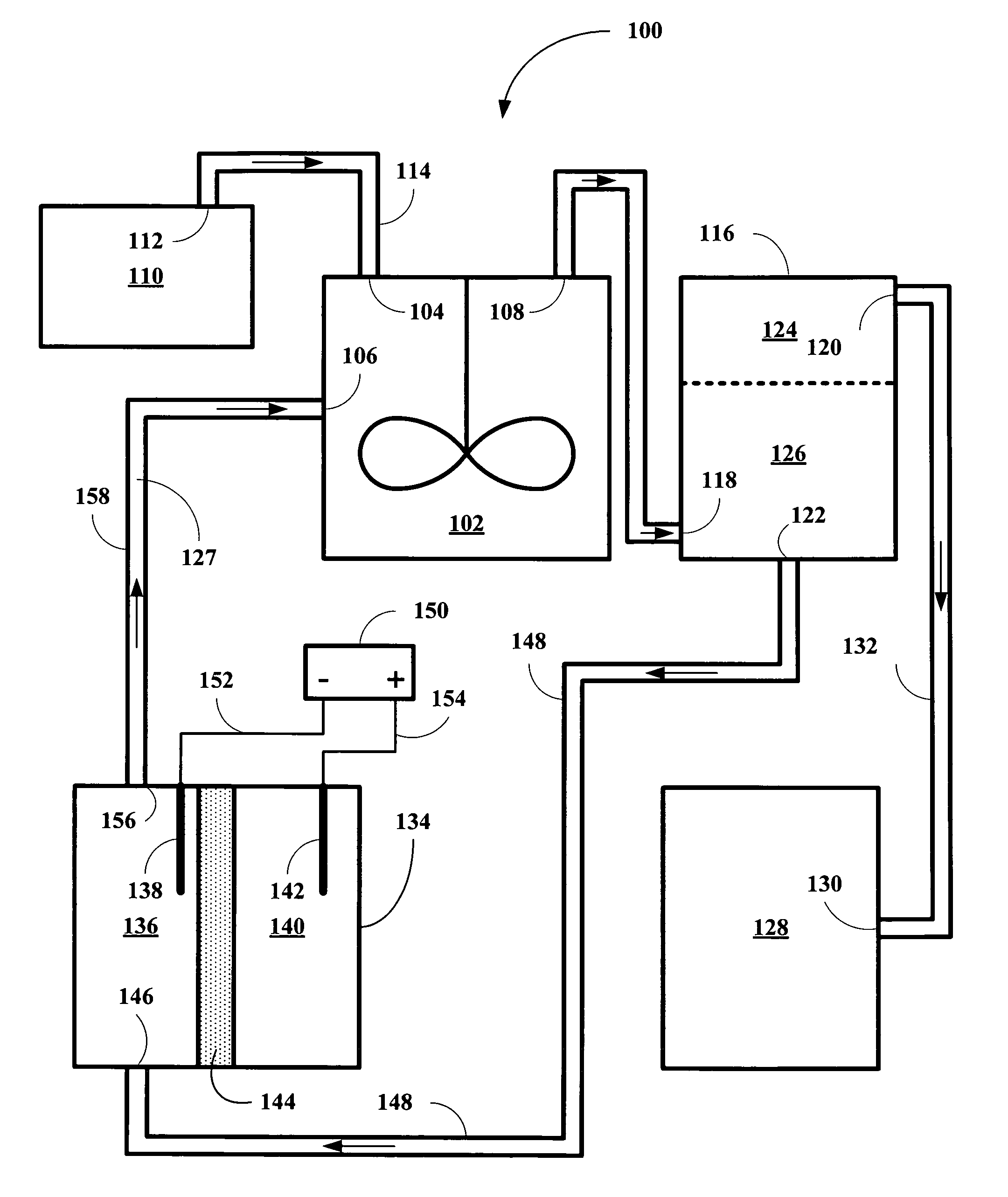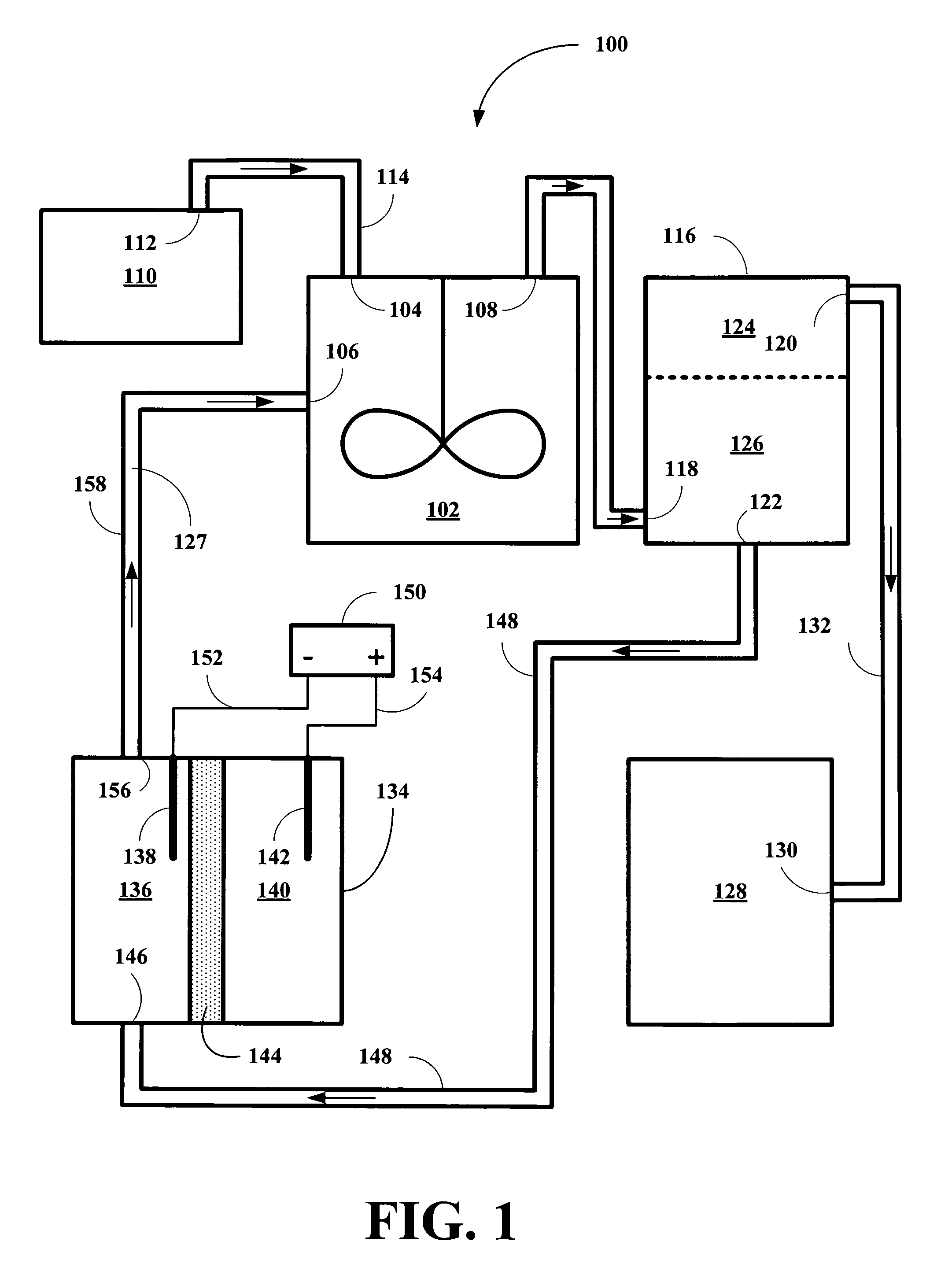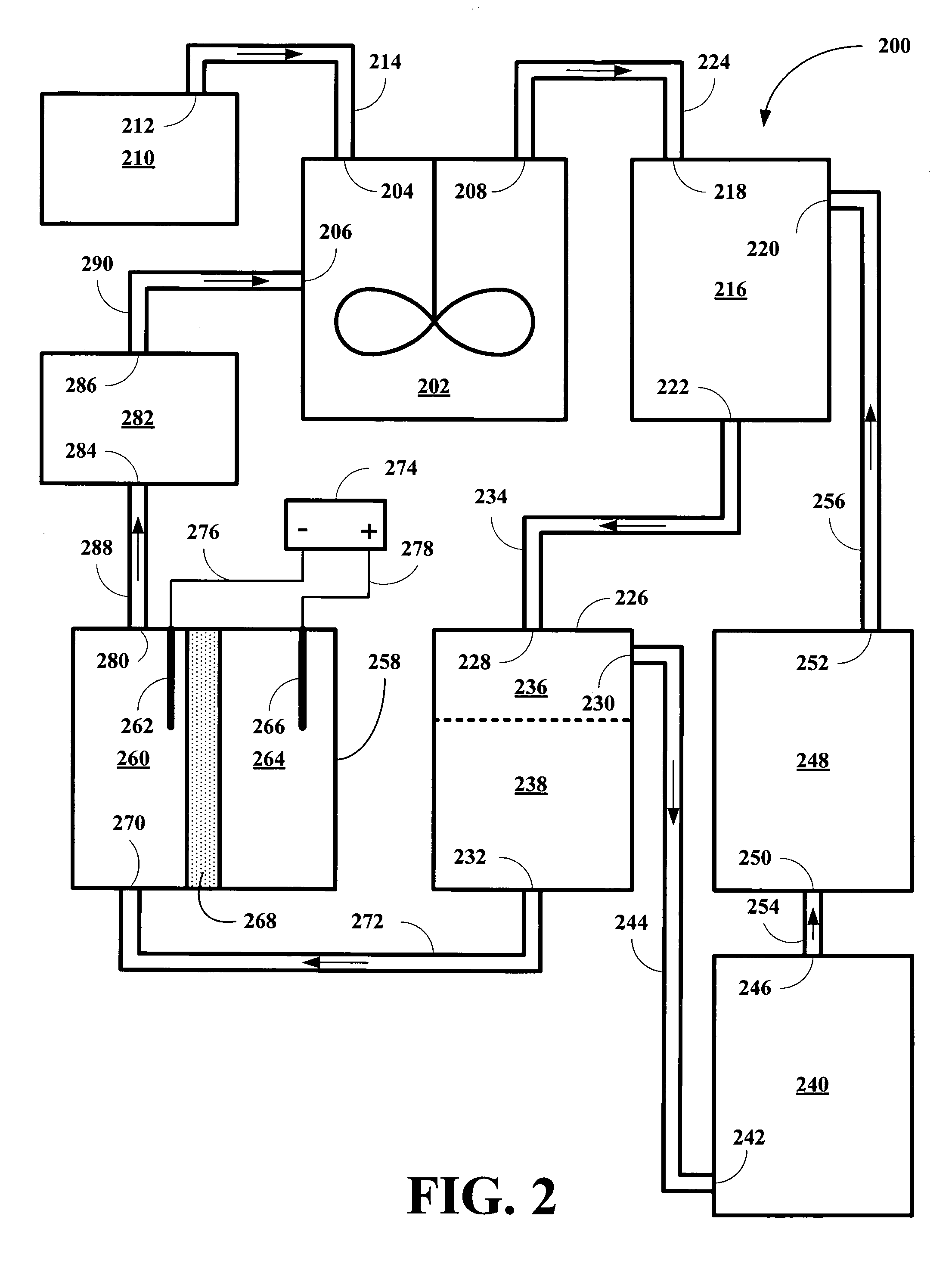Coupled electrochemical method for reduction of polyols to hydrocarbons
a polyol and hydrocarbon technology, applied in the field of electrochemical conversion systems of polyols to hydrocarbon products, can solve problems such as difficult regeneration of byproducts
- Summary
- Abstract
- Description
- Claims
- Application Information
AI Technical Summary
Benefits of technology
Problems solved by technology
Method used
Image
Examples
Embodiment Construction
[0014]The inventor has found that HI solutions, together with reduced metal ions stable in acidic conditions and having the appropriate reduction potentials, are capable of removing incipient I2 and providing hydrocarbon products and of being continuously regenerated so that the conversion process can be carried out on an continuous, semi-continuous, or periodically continuous basis. The inventor has found that vanadium II (V2+), europium II (Eu2+), and titanium II (Ti2+) ions are suitable for the co-reducing component for the reduction of polyols by HI solutions, but capable of continuous operation via reduction of the oxidized state of the metal ions back to their reduced state. Table I shows their standard reduction potentials and our experimental reduction potentials in 0.1 M HI solution versus Ag / AgCl reference electrode.
[0015]
TABLE IExperimental Reduction Potentials in 0.1 M HIHalf Cell RxnE°(V)E*(v)H3PO4 + 2e− = H3PO3−0.27−0.63V3+ + e− = V2+−0.26−0.89Eu3+ + e− = Eu2+−0.35−0.9...
PUM
| Property | Measurement | Unit |
|---|---|---|
| temperature | aaaaa | aaaaa |
| temperature | aaaaa | aaaaa |
| constant current | aaaaa | aaaaa |
Abstract
Description
Claims
Application Information
 Login to View More
Login to View More - R&D
- Intellectual Property
- Life Sciences
- Materials
- Tech Scout
- Unparalleled Data Quality
- Higher Quality Content
- 60% Fewer Hallucinations
Browse by: Latest US Patents, China's latest patents, Technical Efficacy Thesaurus, Application Domain, Technology Topic, Popular Technical Reports.
© 2025 PatSnap. All rights reserved.Legal|Privacy policy|Modern Slavery Act Transparency Statement|Sitemap|About US| Contact US: help@patsnap.com



